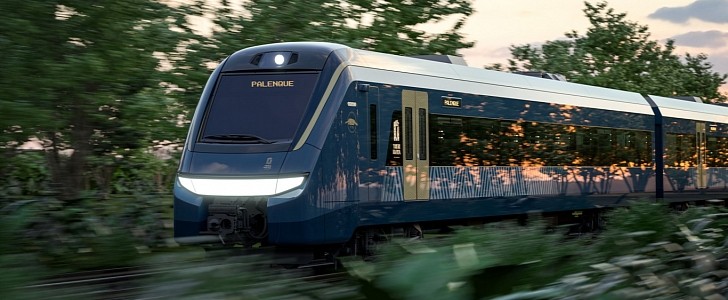A complex rail project is currently underway in the Yucatan peninsula in Mexico. A consortium including Alstom and Bombardier, together with other partners, is tasked with building a railway system that will connect the historical sites on the peninsula, the trains that will circulate on them, plus the related maintenance infrastructure. But the latest “hurdle” faced by the project is an important archaeological discovery.
A place with such rich history and culture could not have been free of surprises during the complex Mayan Train (Tren Maya) project. Indeed, over 25,000 “immovable assets,” including ancient roads, human bones, and ceramic pots, have been discovered so far along the project’s sections, Artnet reports.
But the latest discovery is much ampler. Mexican authorities have announced that the site of an entire ancient city with hundreds of buildings, recognized as Paamul II, was uncovered. A special corridor will protect the site from now on as construction continues.
But this might spark new protests against the project, which isn’t seen in a favorable light by environmental and archeological activists. Since construction kicked off two years ago, protesters feared that the region’s unique heritage is being negatively impacted.
On the other hand, the Mayan Train is supposed to help promote precisely that heritage by encouraging tourists to explore more than the luxury resorts in the area. In turn, this would lead to local economic growth. A massive national project, the Mayan Train is supposed to be built 100% domestically.
According to Alstom, 42 of its X’trapolis electric trains, sporting an exclusive design for Mexico, will be manufactured at the historic Ciudad Sahagun plant in Hidalgo. Alstom will design three versions of the X’trapolis, while Bombardier is providing several components, including the Flexx Eco chassis, designed for speeds of up to 176 kph (109 mph).
The future Mayan train will cover 1,545 km (960 miles), and its first section is set to start operating by the end of 2023.
But the latest discovery is much ampler. Mexican authorities have announced that the site of an entire ancient city with hundreds of buildings, recognized as Paamul II, was uncovered. A special corridor will protect the site from now on as construction continues.
But this might spark new protests against the project, which isn’t seen in a favorable light by environmental and archeological activists. Since construction kicked off two years ago, protesters feared that the region’s unique heritage is being negatively impacted.
On the other hand, the Mayan Train is supposed to help promote precisely that heritage by encouraging tourists to explore more than the luxury resorts in the area. In turn, this would lead to local economic growth. A massive national project, the Mayan Train is supposed to be built 100% domestically.
According to Alstom, 42 of its X’trapolis electric trains, sporting an exclusive design for Mexico, will be manufactured at the historic Ciudad Sahagun plant in Hidalgo. Alstom will design three versions of the X’trapolis, while Bombardier is providing several components, including the Flexx Eco chassis, designed for speeds of up to 176 kph (109 mph).
The future Mayan train will cover 1,545 km (960 miles), and its first section is set to start operating by the end of 2023.







